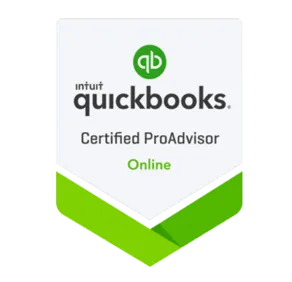OUR BLOG
Your hub for insightful and actionable content to help you unlock the potential of your business.

What To Do if Your Business is Operating at a Loss
Don’t panic. It’s not uncommon for businesses to operate at a loss, especially those businesses that are young (under 5 years) or growing. Every business owner aims to generate maximum profits and avoid losses and risks. Unfortunately, there is no secret sauce to add to the recipe for guaranteed results. But we will tell you about a secret sauce to guarantee your business is profitable at the end of this article (can’t wait? click here).
What does operating at a loss mean?
It is pretty simple, operating at a loss is when you’re spending more money than is coming into the business.
Businesses can operate at a loss for a short time when starting out or in periods of growth. It’s OK if you’ve got enough money in the bank to cover the costs of running your business until things pick up or your growth starts to add funds to your bank account.
What you don’t want is your business operating at a loss frequently. If your company often operates at a loss, you’ll need to make changes to how your business operates.
How to know if you’re operating at a loss.
No spreadsheets are needed for this step. There are 3 sure-fire ways to know if your business is operating at a loss:
You can’t pay your bills. Being unable to pay your business expenses is a huge red flag. Time to hit pause and evaluate things a little closer.
You’re in your overdraft and don’t have a plan to pay it off. Leveraging credit to support a short-term operating loss is OK, but you have to have a plan to pay it back; otherwise, you are just digging the debt and expense hole deeper.
Your sales are less than anticipated. You need to know what your selling minimum is and push to exceed that every month or your operating loss will quickly become long-term. For example, if your business needs to sell ten bags of nails a day to cover your expenses and you’ve been selling three on average, well, you see the problem there.
What to do if you’re operating at a loss
This is the big question. Because most businesses are unique in operation and service or product, we can only provide you with a list of things that we find help commonly. If you want to save time and get to the root of the problem, book a no-obligation alignment assessment with us, we’d love to help!
Ultimately, if your business is losing more money than it’s bringing in, you need to make some changes to keep your business running. Here are ways that may work for you to make your business profitable.
Reduce Your Expenses
If you can’t pay your expenses, you need to start cutting back and looking for other ways to reduce your costs. Here are a few areas to look for some reductions:
Subscriptions
We all have those subscriptions we forgot about or the software package an old employee used, but no one uses it now. It is time to dig in and really evaluate what you need. Decide what adds value to your business and what is no longer needed.
Employees
We all hate to do it, but now is the time to evaluate your team costs. Often there are opportunities to maximize your people, and increase your sales without having to add additional team members. You should also look to see if you can automate some tasks, not with the goal of eliminating positions but rather automating repetitive tasks so that employees expertise can be better used elsewhere. Worst case scenario, you may find that in reality you are overstaffed. In this case, outsourcing can be more cost effective than having a full-time employee and is something to consider when trying to reduce your expenses.
Suppliers
Reach out and try to negotiate better deals from your suppliers, perhaps a higher volume order can reduce your costs, or maybe they have a sale or discount you were never aware of that you could apply. If you are behind on paying a supplier and rely on them for your product or service, ask for a payment plan to get you caught up, many will appreciate that you are making an effort and accommodate your request.
Assets
Sell assets you’re no longer using. You don’t need unused equipment, furniture or other assets. Now is the time to sell them! List your unused assets for sale or auction. Reach out to your competitors or other business you know to see if they are interested. Those assets are doing nothing but taking up space, now is the time to turn them into cash.
Office Space
If you own your space, it is time to consider subletting to another business. Subletting will allow you to quickly cover some of your expenses every month. This would also work if you were leasing your space and have a long-term contract (be sure to see if your lease allows for subletting first). If you are leasing your space, really consider if you need the size of area you have. Although moving can be expensive, moving to a space with a lower rent may outweigh the long-term cost.
Don’t Stop Paying Yourself
Some experts would also recommend reducing the pay you, as the owner, are taking from the business. This is not something we recommend.
Increase your sales.
Shocking revelation, right? You know it as much as we do, the more you sell, the more you make. Here are some things to consider when you are working to increase your sales revenue:
Charge More
Tweaking your pricing and applying a new pricing strategy is an excellent way to turn your loss around. If you plan to try this tactic, fine-tune your pricing in a way that doesn’t damage your current client relationships, but help gets you the needed additional revenue.
Look to Your Existing Customers
They’re your best prospects for immediate sales. They know and like you already. Selling more to them is one of the best and easiest ways to boost your bank account. Maybe it is a reorder, or perhaps they don’t know all your business has to offer. Either way reach out to them.
Sell More
This can happen in a variety of ways. Can you implement a program to incentivize your sales team? Maybe now is the time to launch new marketing tactics or discount programs (it may add to your expenses, but proper marketing could have a high ROI). It could be time to get out there and focus on connecting with your target audience in person.
Get Advice
Advice from an accountant, business advisor or bookkeeper can help you get your business back on track and avoid trouble ahead. Having a trusted partner who you can bounce ideas off of and set up an accountability structure with can be invaluable when it comes to reaching any goals.
Claiming Losses on Your Taxes
Your accountant or bookkeeper can best advise you on your tax position and submit your annual return.
For corporations, net operating losses may be carried back three tax years and forward 20. Special rules may prohibit the use of losses from other years when the corporation has been acquired.
Keep Profitable
You want to ensure that once you come out of loss, you stay out of loss and in the profit. There are a few common mistakes many business owners make that you should keep in mind as you move forward:
Ignoring the Warning Signs
Don’t be an ostrich. Keep your head above ground and pay attention. Review your revenue and expenses regularly. Many business owners ignore their revenue and expenses and only focus on their bank accounts. A significant fluctuation in either revenue or expenses is an early warning sign of something going awry. Catch it early and avoid long-term losses.
No Plan
Not having a plan for getting out of your loss position is a mistake. Your plan should not include adding to your expenses. Look to be innovative and evaluate your expenses and sales closely. Then break it all down into a plan.
We mentioned above that even if you think a new product or service will save it all, don’t do it. A common error business owners make is adding a new service or product to try to make up for their losses. Purchasing things you can’t pay for is the wrong way to go, and every service or product addition comes with a cost. In fact, if you go to a supplier when you know you can’t pay the invoice, you’re operating in an insolvent position and maybe even bankrupt.
The Profit Secret Sauce
Sounds crazy, like a clickbait ad, right? It’s not. It is actually shockingly easy…it is done in 3 steps:
Open another business account (checking, savings, or whatever works for you).
Transfer 1% of your revenue into that account. You can do this weekly, bi-weekly or monthly.
Now don’t touch it. This money is not to be used for your paycheck, operating expenses, special projects or taxes….it is profit and profit only.
In three easy steps, you will have an actual true profit in your new business account. This is a small part of the Profit First System we use. Other things you learn from profit first include ensuring you get paid first, ensuring your taxes are covered every time, and supporting your special project without breaking.
We would love to connect and talk about Profit First and how we can help your business. But if you are still unsure, take a few moments one day to download and read the first 2 chapters of Profit First for free.






